Different Ways of Buying Digital Media
“Oh, I already do digital.” How many times have you heard that from advertisers? Sometimes we may try to dig deeper and learn what they mean by “digital.” Other times they may have no idea what they have done or are currently doing—they just know they are buying media in the digital space.
It is our job as media partners and consultants to ensure that our advertisers know exactly what type of digital campaign they are investing in and how it will drive results for their business. We will save the results and goal setting for another article, and focus today on the different types of digital media that are available for advertisers to purchase. This article will focus on paid media and the different ways we can promote our advertiser’s brands in the digital space.
Formats: Search & Display
Search and display campaigns make up the bulk of the digital landscape. In 2019, eMarketer projects that 54% of digital ad spend will come from display and 42% will come from search. The final 4% will come from email, classified directories, etc. Display ad spending includes banners, rich media, sponsorships, native, video, and ads such as Facebook’s News Feed Ads and Twitter’s Promoted Tweets. Search ad spending includes contextual text links, paid listings and SEO.
Buying: Search
Paid search is the process of buying text ads on search engines such as Google, Yahoo and Bing. Search ads are delivered to a user via a search results page. The ideal search campaign will be custom built for the advertiser down to the structure and keywords used in the campaign.
Buying: Display
There are a variety of ways to buy display:
- Social: The social landscape is large and is made up of a variety of sites: Facebook, Instagram, Pinterest, Snapchat, LinkedIn, and Twitter are the most popular. For social campaigns, identifying the goal or object of the campaign is important. Once that is identified, campaigns can be set up with different targeting and creatives to test one vs another.
- Direct: This involves an IO with a specific publisher, network, or media company. This media is bought on a guaranteed contract and involves set CPMs and minimums (local site minimums will be smaller while national sites will have larger minimums). Buying site direct is a way to ensure the advertiser can align themselves with specific brands and access ad units and other features (data, tech, etc) not available in the programmatic space.
- Programmatic: Programmatic advertising is the best way to reach an audience with scale. This is typically done through a DSP via a partner or through an in-house buying desk. Programmatic buying allows advertisers to reach users across a vast number of websites while utilizing targeting to hone in on their audience. A DSP allows for the purchase of impressions in real-time, which in turn gives the buyer real-time results. These real-time results can help achieve better performance and more efficient campaigns.
Your partnership with Centro gives you access to all these buying options through our proprietary software Basis. Owning all aspects of an advertiser’s media plan allows for greater control on your end, and better overall performance for the advertiser.
The next time an advertiser tells you they “do digital” but they are not quite sure what that means, take the time to educate, and let them know you can help them do it all!


